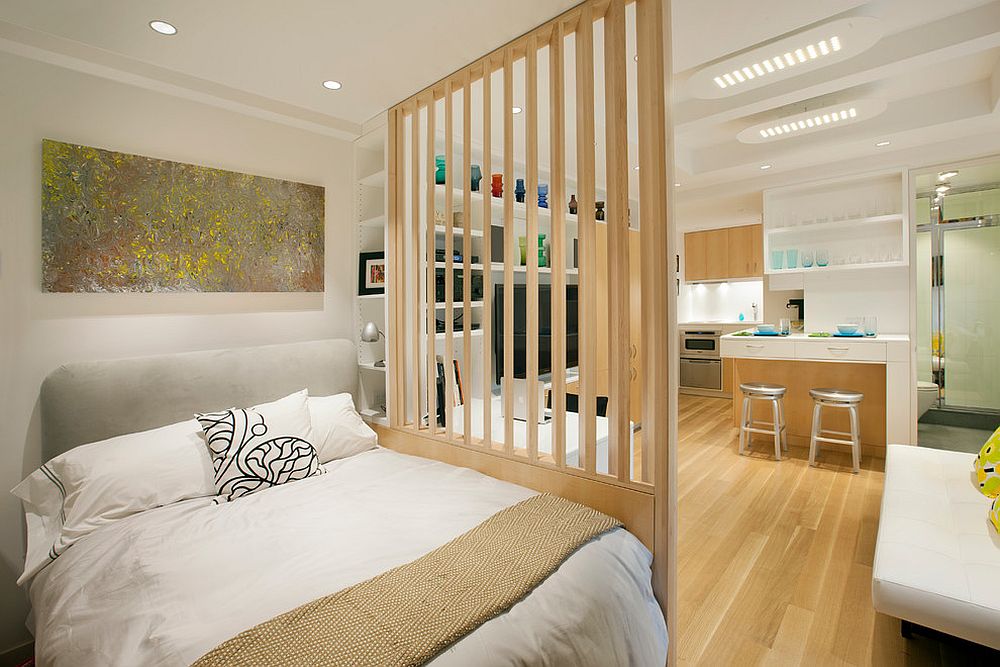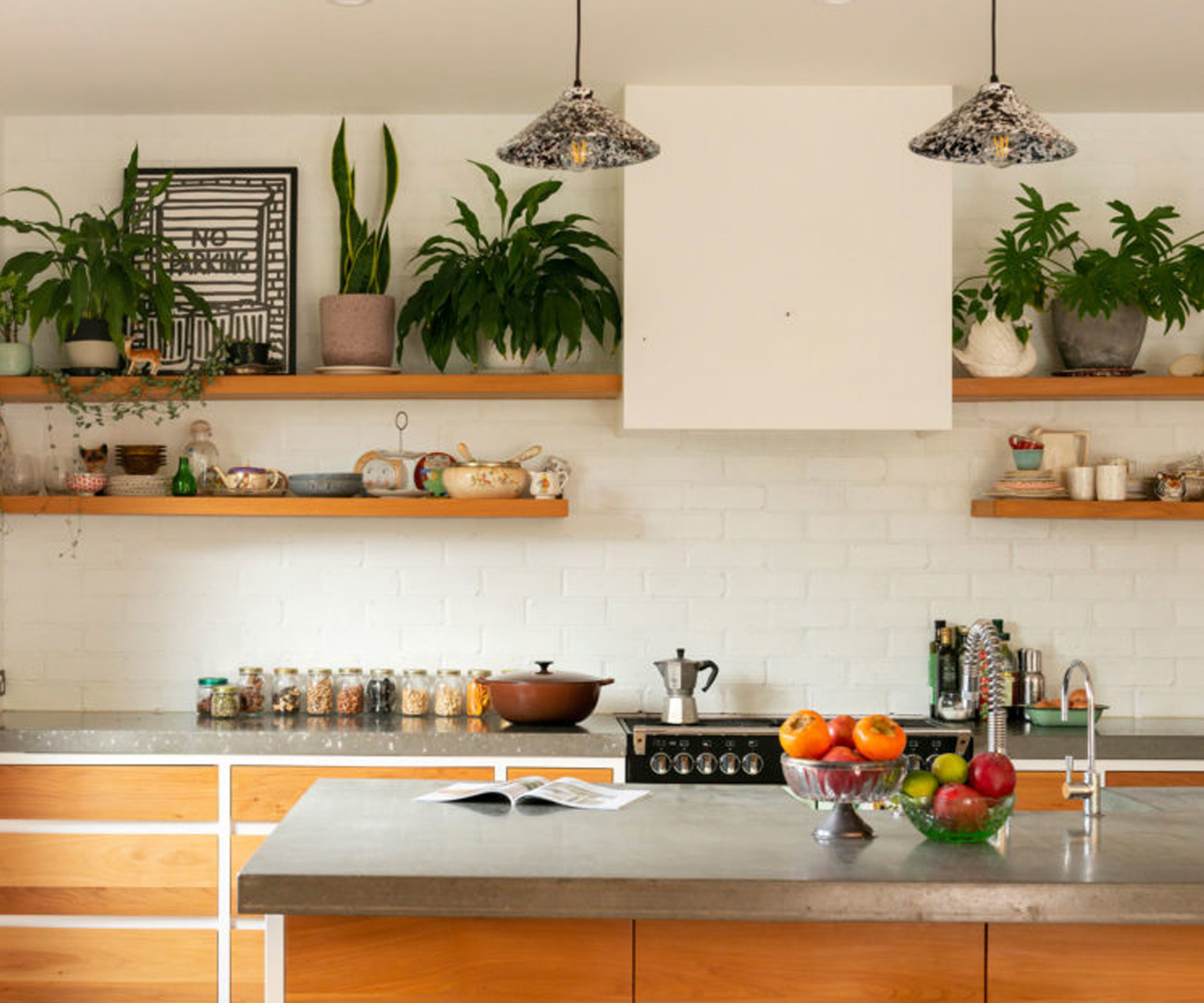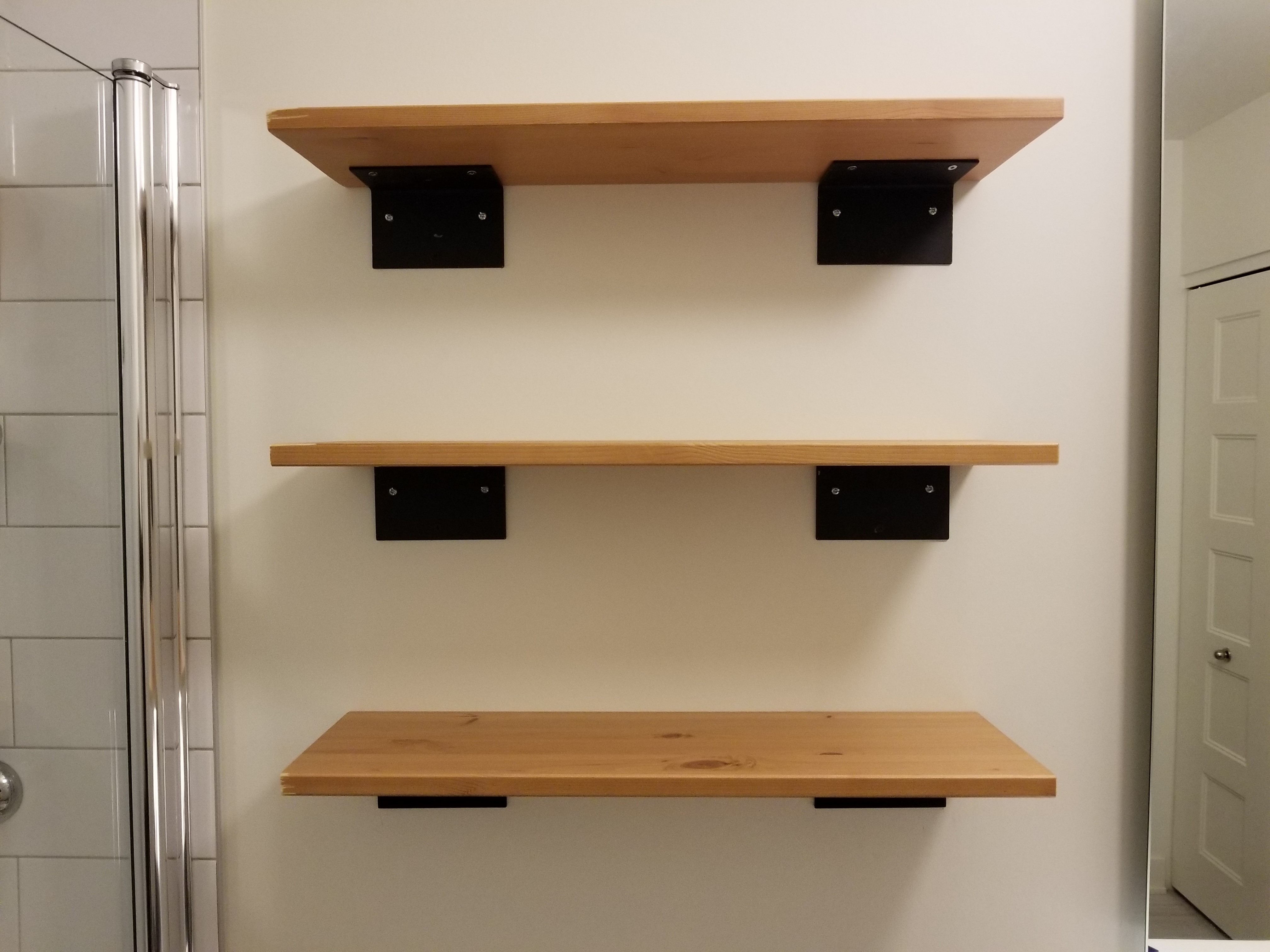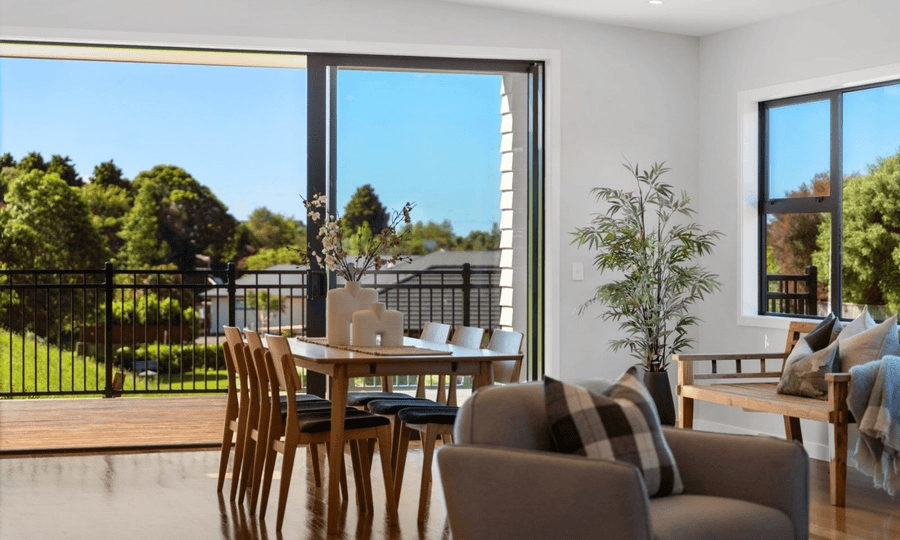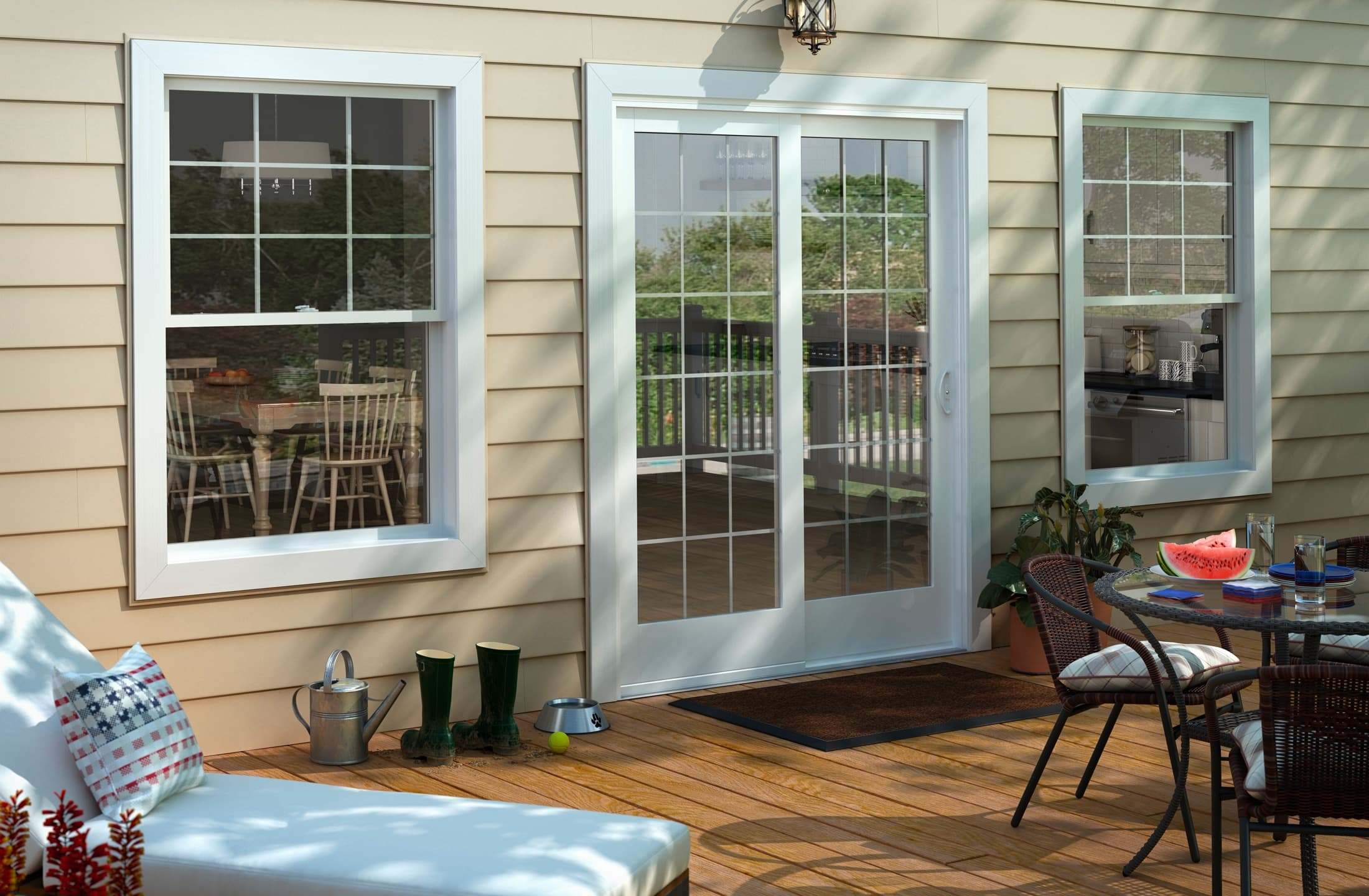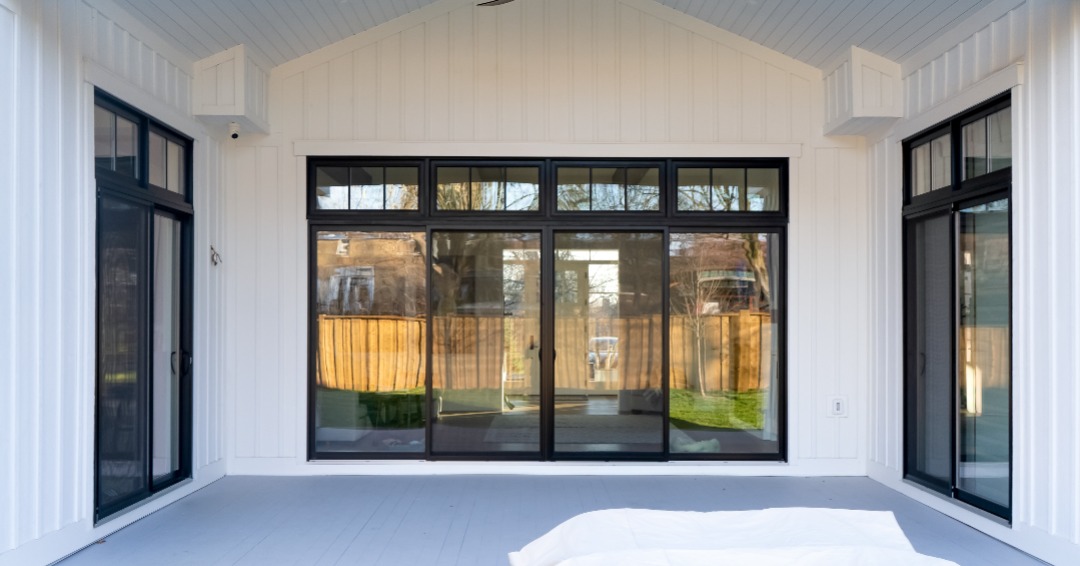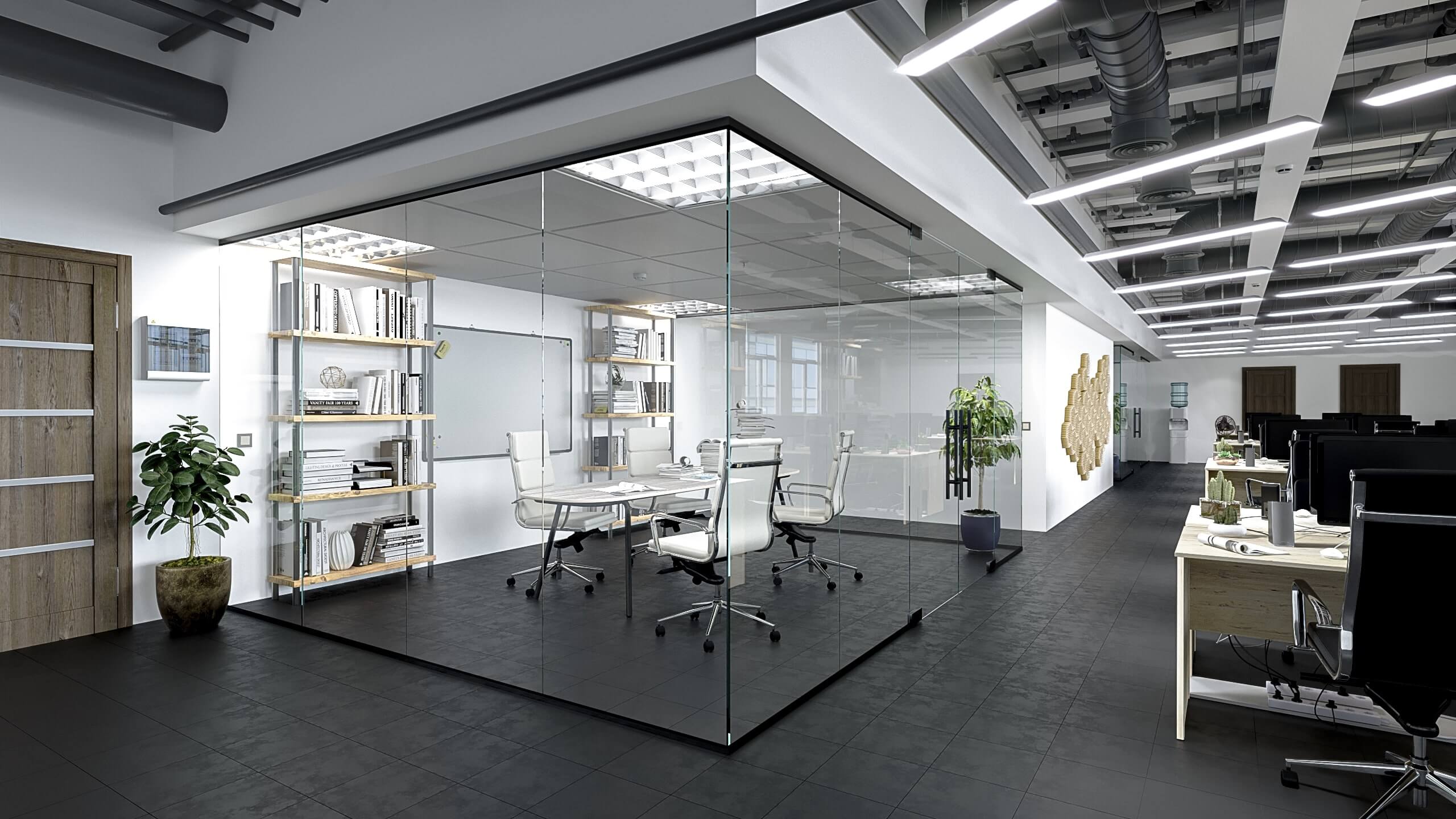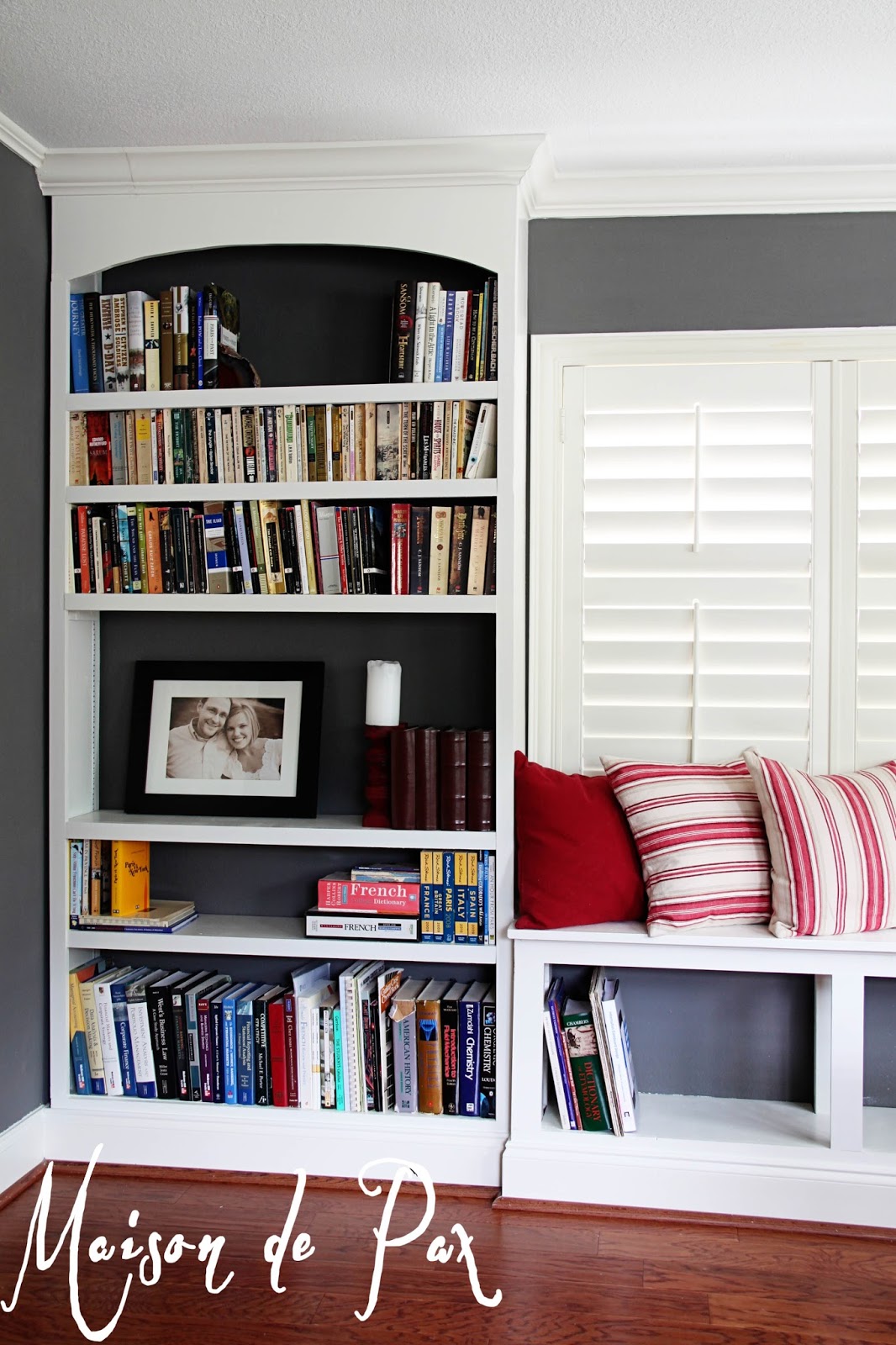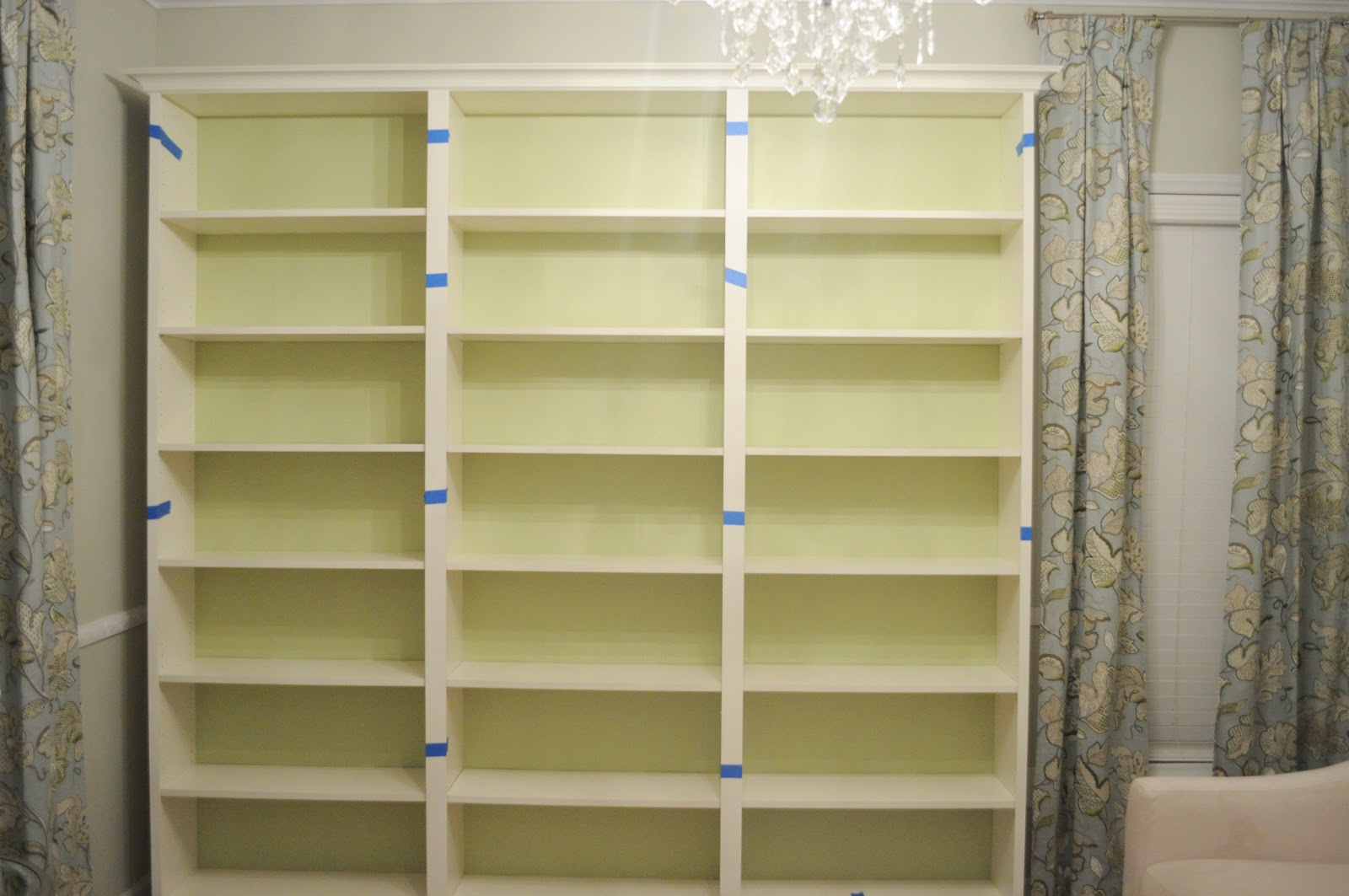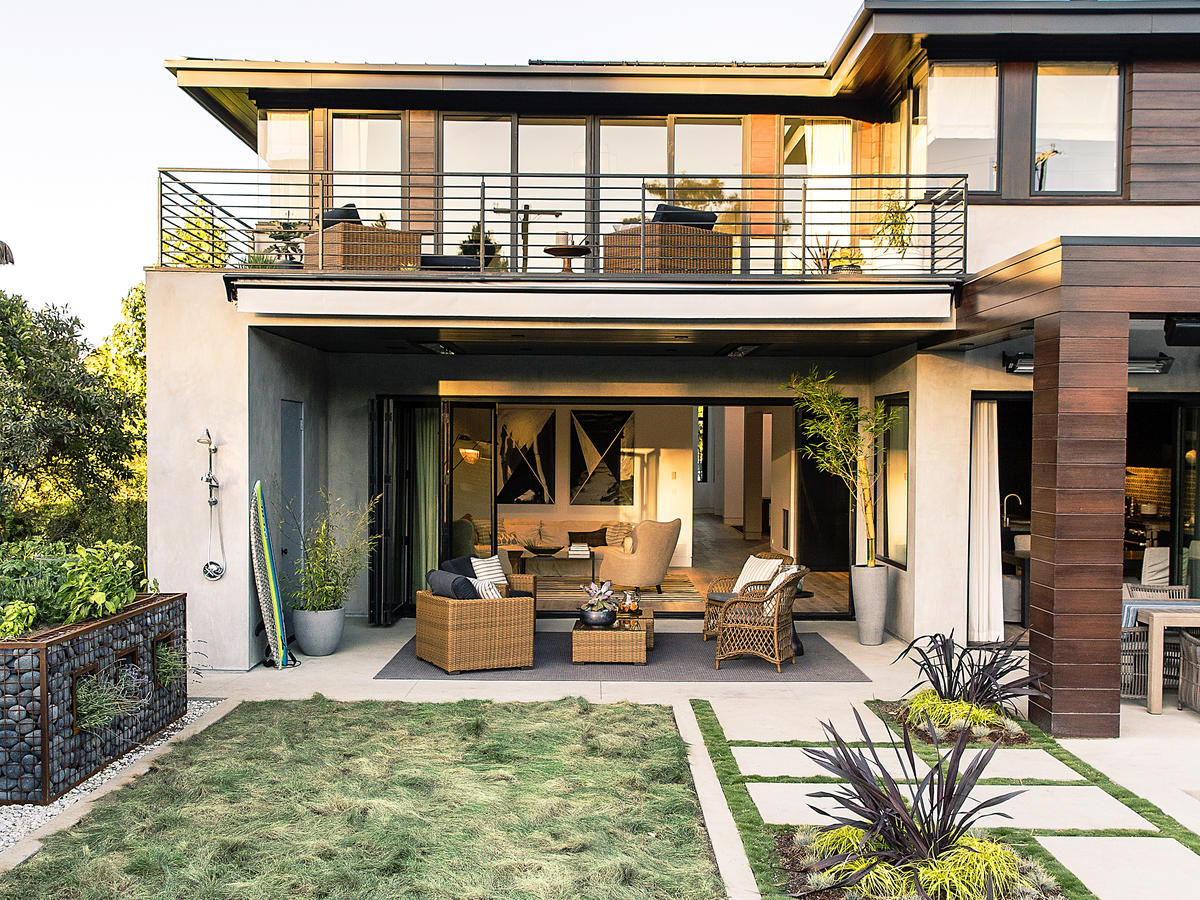A kitchen island is a great way to create separation between your dining table and kitchen in an open floor plan. Not only does it provide additional counter space and storage, but it also serves as a visual divider between the two spaces. With its versatile design, a kitchen island can be customized to fit your specific needs and aesthetic preferences. You can opt for a traditional rectangular island or get creative with a unique shape or design. Consider incorporating a breakfast bar into your kitchen island for a designated dining area.1. Kitchen Island
If you want a more defined separation between your dining table and kitchen, a room divider can be a great option. Room dividers come in various forms, from bookshelves to curtains to folding screens. They add a decorative element to your space while also creating a clear distinction between the dining and kitchen areas. Choose a room divider that complements your existing decor and reflects your personal style.2. Room Divider
Open shelving is not only practical for storage, but it can also be used as a stylish way to separate your dining table and kitchen. By keeping the shelves open, you maintain a sense of openness in your space while still creating a visual break between the two areas. You can use the shelves to display decorative items or to store frequently used kitchen essentials. Consider incorporating some greenery or colorful dishes to add a pop of color to your space.3. Open Shelving
A half wall, also known as a pony wall, is a great way to create a physical barrier between your dining table and kitchen while still maintaining an open feel. This type of separation is perfect for those who want to keep an eye on children or pets in the kitchen while dining. You can also use the top of the half wall as additional counter space or a serving area for meals. Get creative with the design of your half wall by incorporating unique tiles or a decorative trim.4. Half Wall
Sliding doors are a popular choice for separating different areas of a home, and they work particularly well for dividing a dining table and kitchen. With sliding doors, you can easily open or close off the two spaces as needed. They also allow for natural light to flow between the two areas, maintaining a sense of openness. Consider using frosted glass for privacy while still allowing light to pass through.5. Sliding Doors
A breakfast bar is a versatile option for separating your dining table and kitchen. Not only does it provide additional counter space and seating, but it also serves as a visual divider between the two areas. You can choose to have the breakfast bar attached to the kitchen island or as a separate piece of furniture. For a cohesive look, choose a breakfast bar that matches your dining table and kitchen countertops.6. Breakfast Bar
Similar to sliding doors, pocket doors are a great way to create separation between your dining table and kitchen while still maintaining an open feel. With pocket doors, you can easily hide away the doors when not in use, creating a seamless transition between the two spaces. This option is ideal for smaller spaces where traditional swinging doors may take up too much room. Choose a pocket door with a unique design or pattern to add visual interest to your space.7. Pocket Doors
A glass partition is a modern and sleek way to separate your dining table and kitchen. It allows for natural light to pass through while still creating a clear division between the two areas. You can opt for a clear or frosted glass partition, depending on the level of privacy you desire. Consider adding some decorative elements, such as etched designs or colored glass, to make a statement in your space.8. Glass Partition
Similar to open shelving, built-in bookshelves can serve as a functional and stylish way to separate your dining table and kitchen. They provide storage and display space while also creating a visual break between the two areas. You can choose to have the bookshelves built into a half wall or use them as a room divider. Fill the shelves with your favorite books, decorative items, and kitchen essentials to add personality to your space.9. Built-in Bookshelves
A folding screen is a versatile and portable option for separating your dining table and kitchen. Not only does it add a decorative element to your space, but it can also be easily moved and stored when not in use. There are endless design options for folding screens, from traditional to modern, so you can find one that fits your style. Consider using a folding screen with a mirrored panel to reflect light and make the space appear larger.10. Folding Screen
Separation Between Dining Table and Kitchen: The Perfect Balance of Functionality and Style

The Importance of a Well-Designed Space
 In today's modern homes, the kitchen and dining area are often considered the heart of the house. It is where families gather to share meals, conversations, and make lasting memories. Therefore, it is essential to have a well-designed space that not only meets your functional needs but also reflects your personal style. One design element that has gained popularity in recent years is the separation between the dining table and kitchen. This design not only adds a touch of elegance to your home but also offers numerous benefits. Let's take a closer look at why you should consider this design in your house.
In today's modern homes, the kitchen and dining area are often considered the heart of the house. It is where families gather to share meals, conversations, and make lasting memories. Therefore, it is essential to have a well-designed space that not only meets your functional needs but also reflects your personal style. One design element that has gained popularity in recent years is the separation between the dining table and kitchen. This design not only adds a touch of elegance to your home but also offers numerous benefits. Let's take a closer look at why you should consider this design in your house.
The Benefits of Separating the Dining Table and Kitchen
 One of the main reasons homeowners opt for a separation between the dining table and kitchen is to create a sense of division between the two areas. This helps to define each space, making it easier to navigate and use. For example, while cooking, you can easily reach for ingredients and utensils without having to maneuver around a dining table in the way. Similarly, during meal times, the separation allows for a more intimate dining experience without the distractions of a busy kitchen.
Apart from the practical advantages, there is also a visual appeal to having a separation between these two spaces. It allows for the creation of distinct design aesthetics while maintaining a cohesive look throughout the house. For instance, you can have a sleek and modern kitchen design while opting for a more traditional and elegant dining area. This adds depth and character to your home, making it feel more inviting and unique.
One of the main reasons homeowners opt for a separation between the dining table and kitchen is to create a sense of division between the two areas. This helps to define each space, making it easier to navigate and use. For example, while cooking, you can easily reach for ingredients and utensils without having to maneuver around a dining table in the way. Similarly, during meal times, the separation allows for a more intimate dining experience without the distractions of a busy kitchen.
Apart from the practical advantages, there is also a visual appeal to having a separation between these two spaces. It allows for the creation of distinct design aesthetics while maintaining a cohesive look throughout the house. For instance, you can have a sleek and modern kitchen design while opting for a more traditional and elegant dining area. This adds depth and character to your home, making it feel more inviting and unique.
Incorporating Separation in Your Home
 There are various ways to incorporate separation between the dining table and kitchen in your home. One option is to have a physical barrier, such as a half wall or a kitchen island, between the two spaces. This not only creates a clear division but also serves as additional storage and counter space. Another option is to use different flooring materials to distinguish between the two areas. For example, you can have hardwood floors in the dining area and tiles in the kitchen. This not only adds a visual separation but also serves a practical purpose, as hardwood floors are easier to clean and maintain.
Additionally, you can use lighting to create separation between the two spaces. For the kitchen, opt for bright, task lighting to aid in cooking and food preparation. In the dining area, choose softer, ambient lighting to create a warm and welcoming atmosphere. This contrast in lighting not only sets the mood but also helps to define the different areas.
There are various ways to incorporate separation between the dining table and kitchen in your home. One option is to have a physical barrier, such as a half wall or a kitchen island, between the two spaces. This not only creates a clear division but also serves as additional storage and counter space. Another option is to use different flooring materials to distinguish between the two areas. For example, you can have hardwood floors in the dining area and tiles in the kitchen. This not only adds a visual separation but also serves a practical purpose, as hardwood floors are easier to clean and maintain.
Additionally, you can use lighting to create separation between the two spaces. For the kitchen, opt for bright, task lighting to aid in cooking and food preparation. In the dining area, choose softer, ambient lighting to create a warm and welcoming atmosphere. This contrast in lighting not only sets the mood but also helps to define the different areas.
In Conclusion
 Incorporating separation between the dining table and kitchen is a smart and stylish way to enhance your home design. It offers practical benefits, such as increased functionality and a sense of division, while also adding visual appeal to your space. So, if you are looking to upgrade your home's design, consider incorporating this element and see the difference it makes. After all, a well-designed space is the key to a happy and comfortable home.
Incorporating separation between the dining table and kitchen is a smart and stylish way to enhance your home design. It offers practical benefits, such as increased functionality and a sense of division, while also adding visual appeal to your space. So, if you are looking to upgrade your home's design, consider incorporating this element and see the difference it makes. After all, a well-designed space is the key to a happy and comfortable home.


















/Roomdivider-GettyImages-1130430856-40a5514b6caa41d19185ef69d2e471e1.jpg)




